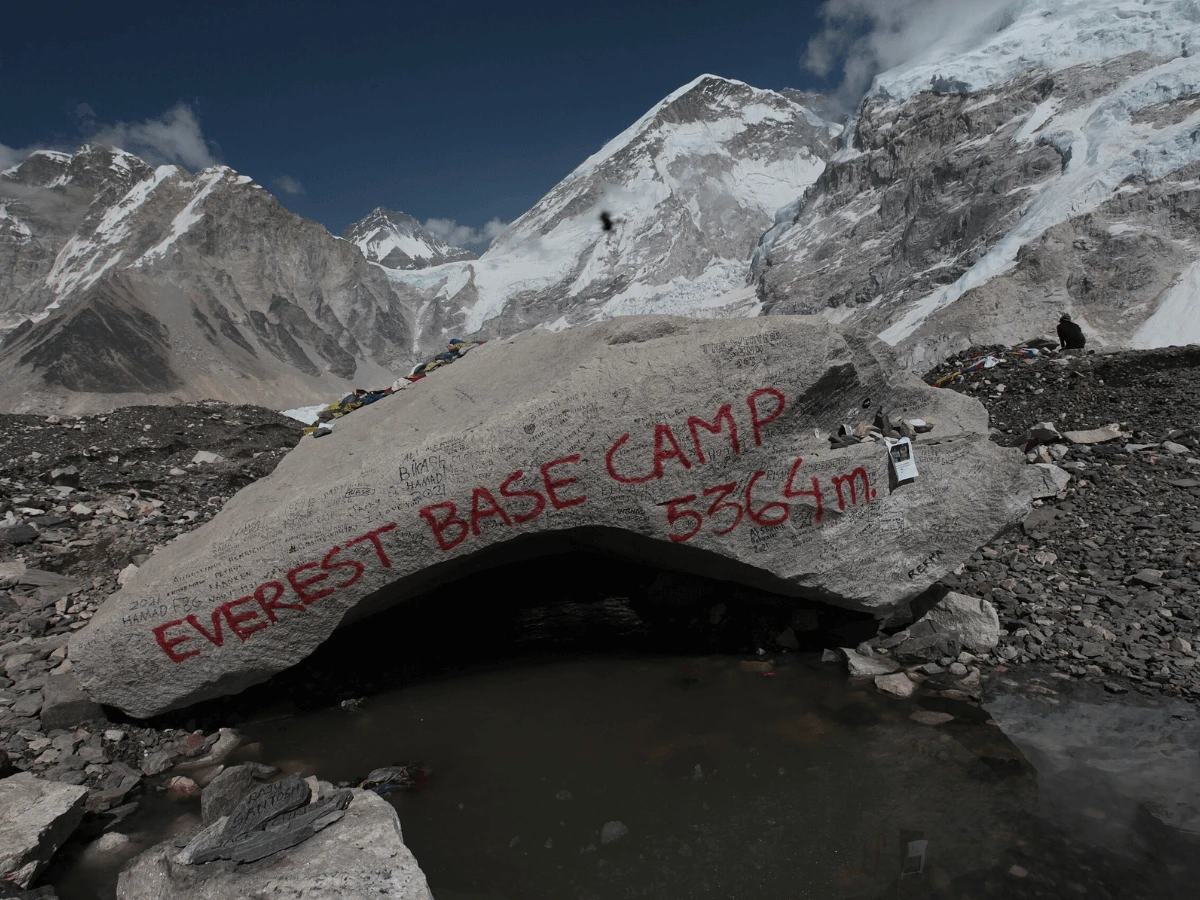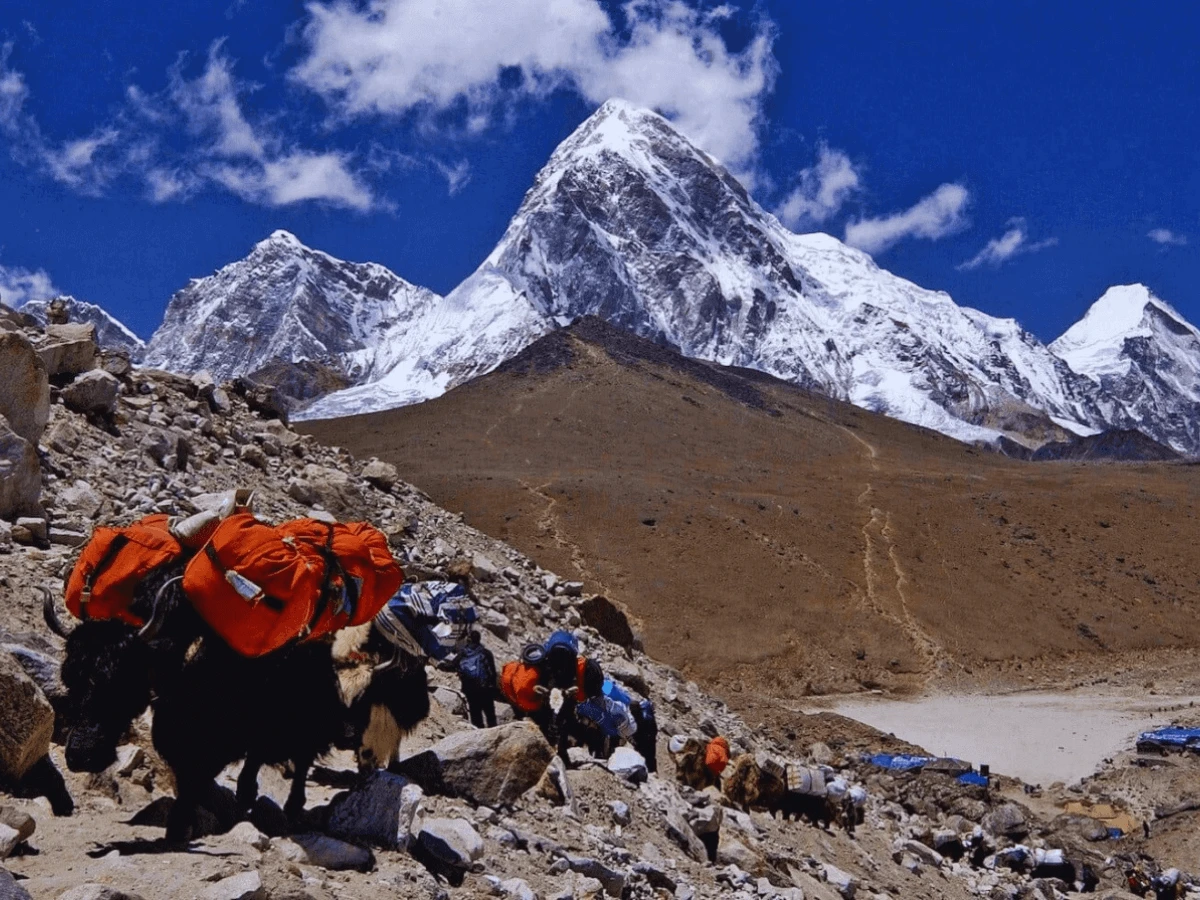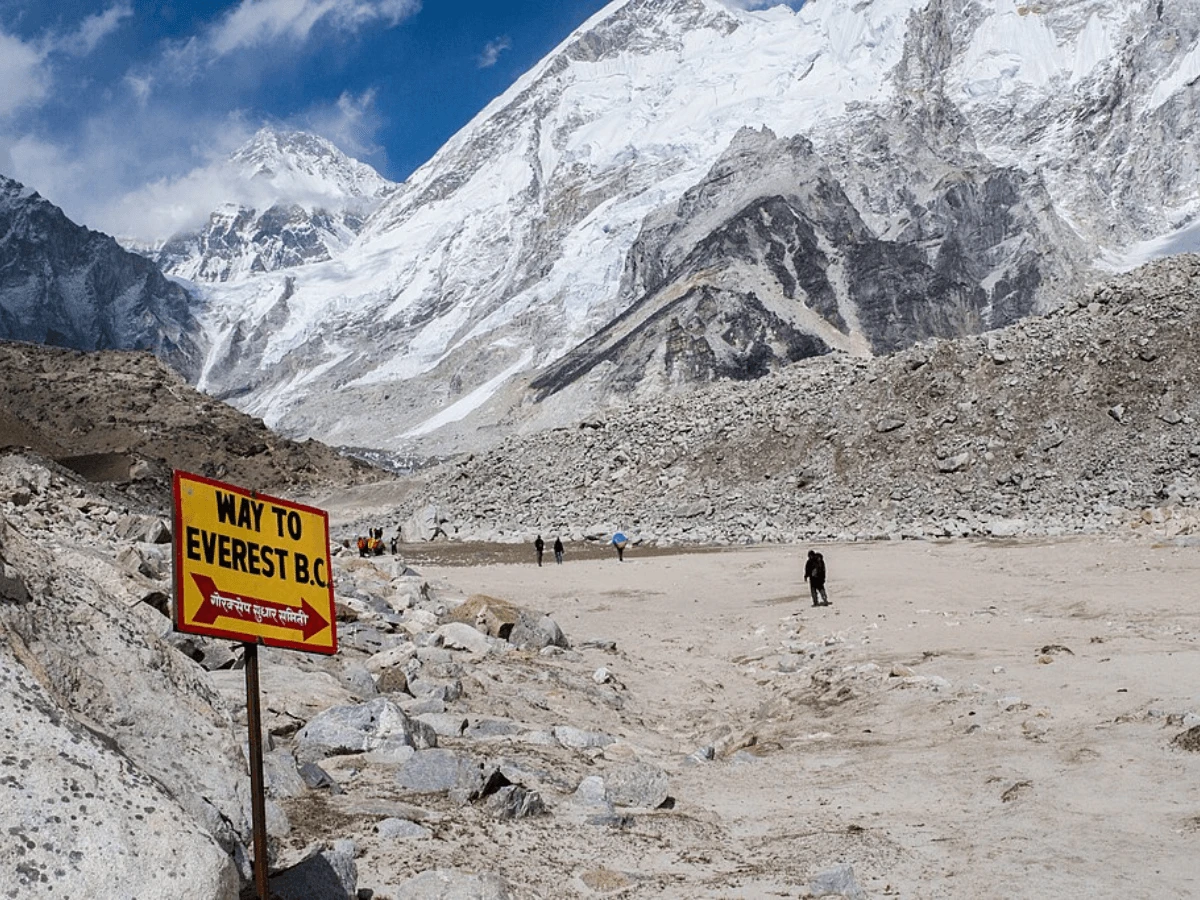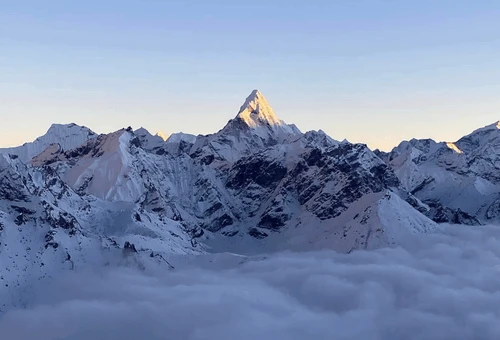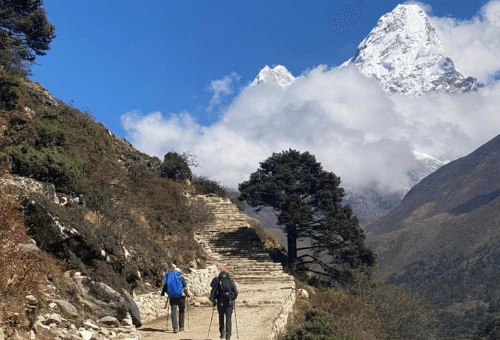Imagine in just 10 days, you can stand at the foot of the world’s highest peak, Mount Everest. Our Short Everest Base Camp Trek – 10 Days is a classic trek and an intense adventure, starting with a spectacular Kathmandu–Lukla flight and a rapid ascent through the Sagarmatha National Park to the mighty Everest Base Camp.
This Short Everest Trek passes through yak pastures, monasteries, and Sherpa villages, soaking in the rich culture and scenery of the Himalayas. Moreover, a major highlight of this short Everest trek is an early morning climb to Kala Patthar (5,545m) for a sunrise view of Everest and its neighbouring peaks. This itinerary packs a lifetime of memories into a short time, making it perfect for travellers with limited days but adventurous spirits.
Mountain Eco Trails has crafted the shortest version of the EBC Trek for those who want to visit the legendary Everest Base Camp quickly. Therefore, this version of the Everest Base Camp Trek Itinerary is not for everyone. The rapid rise in elevation through the trek requires strong stamina and endurance to adapt to altitude. The standard Everest Base Camp Trek 14 Days has extra acclimatisation days. Meanwhile, this 10-day Short Everest Base Camp Trek with no acclimatisation demands physical and mental toughness.
How long is this Short Everest Base Camp Trek?
The Everest Base Camp trek is a high-altitude trail through Nepal’s Khumbu region. Covering roughly 60–70 km one way (about 120–130 km round trip), the journey involves significant altitude gain – from Lukla (2,860m) up to Base Camp (5,364m). In our 10-day itinerary, you will typically walk 6–8 hours per day. This fast-paced schedule means no extra rest days; it’s a vigorous trek that rewards prepared, energetic trekkers. However, those who have enough time can do this trek following the Everest Base Camp Trek 12 Day Itinerary.
Why choose a 10-day short trek to Everest Base Camp?
A 10-day Everest Base Camp trek offers the thrill of the classic route in under two weeks. This short Everest Base Camp trek is perfect for fit adventurers who have limited time, yet want to admire the beauty of the Everest. In just 10 days, you’ll immerse yourself in Sherpa culture and the Himalayan wilderness, catching all the highlights – from rhododendron forests and suspension bridges to the glacier-carved Khumbu Valley.
The condensed schedule means more hours of walking per day and no acclimatisation, making it a challenging trek in Everest. However, it allows you to witness Everest’s awe in a memorable sprint. By Day 6, you reach Everest Base Camp (5,364m) itself, and climb to Kala Patthar (5,545m) delivering an iconic sunrise over Everest that few panoramic hikes can match.
It’s perfect if you have a short time and a limited budget. Moreover, our expert guides manage the logistics – from permits and flights to acclimatisation advice – allowing you to focus on the journey. In summary, a 10-day Everest Base Camp Short trek delivers you the experience of the Everest Region.
Everest Base Camp Itinerary 10 Days Overview
The Short Everest Base Camp Trek Itinerary begins with a flight from Kathmandu to Lukla or Ramecchap to Lukla depending on the season. Our trekking guide from the Mountain Eco Trails will assist you in arranging a vehicle to the airport and taking a flight. From Kathmandu, you will reach Lukla within 45 minutes and land at Tenzing Hillary Airport, one of the most dangerous airports in the world.
Time to stretch your legs and do some warm-up to begin the iconic walk through the EBC Trek route. The first day will be an easy hike to Phadking, crossing the small villages like Cheeplung and Ghat. Generally, while following the 12-day Everest Base Camp Trek, there is an extra day in Namche for acclimatisation. However, this EBC short trek continues from Phakding to Namche and follows the trail continuously through Tengboche, Dingboche, Lobuche, and lastly Gorakshep.
The final section of the Short Everest Base Camp Trek is a hike from Gorakshep to Kala Pathar for stunning sunrise views over Mount Everest and several other peaks. Likewise, don’t forget that you will still hike to EBC from Gorakshep while you trek from Lobuche. After completing both hikes, retrace the same EBC Trek route to return to Lukla.
10-Day Short EBC Trek Cost 2026,2027
Our 10-Day Short Everest Base Camp Trek packages are priced competitively for 2026 and 2027. The Short Everest Base Camp Trek 10 Days Price starts at USD 1299 for a private tour, USD 1,199 per person for a small group (2–4 trekkers), and USD 1,099 per person for larger groups (5–10). These costs typically include all Everest Trek permits, accommodations on a sharing basis, meals, an experienced guide, land transportation, and airport taxes.
Choose the Best Company for Short EBC Trek
When choosing an operator for a challenging journey like the Short Everest Base Camp Trek, trust and expertise are paramount. Mountain Eco Trails stands out as a top choice. We are a fully government-authorised trekking company based in Kathmandu, with a team of highly trained Sherpa guides. Here are the reasons why you should choose us for this 10-Day Everest Base Camp Trek:
- Complimentary Airport Pick up and Drop off
- Free Everest Base Camp Trek Route Map
- Complimentary Duffel Bag, Trekking Poles, and SIM Card.
- First Aid Carried by the guide.
- Seasonal Fruits Everyday
- Luggate Storage Access at the Office with no cost.
- Experienced Sherpa Guide and other support staff.
In short, choosing Mountain Eco Trails means choosing a company with experience, local authority, and the trust of hundreds of Everest trekkers. We handle the logistics so you can focus on the thrill of the trek. Contact us for more details via email or WhatsApp at +9779849790153.

